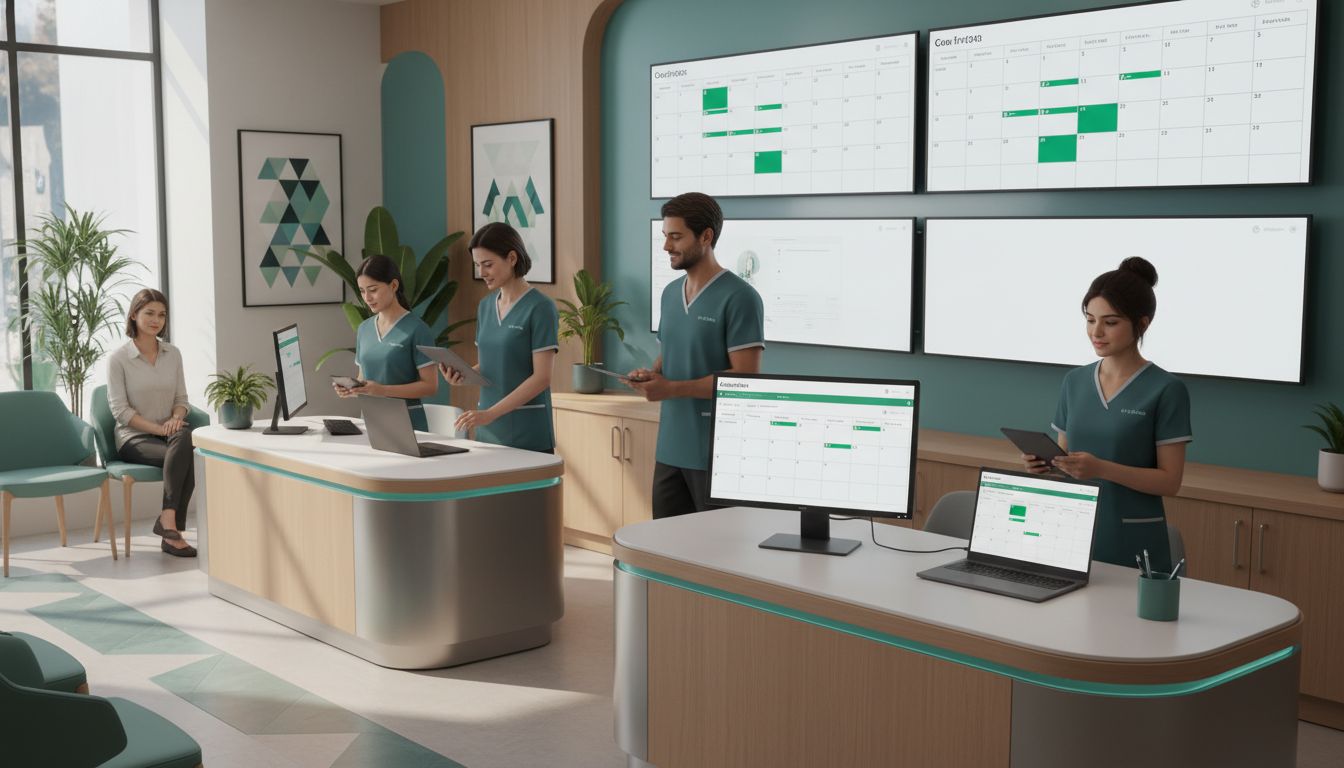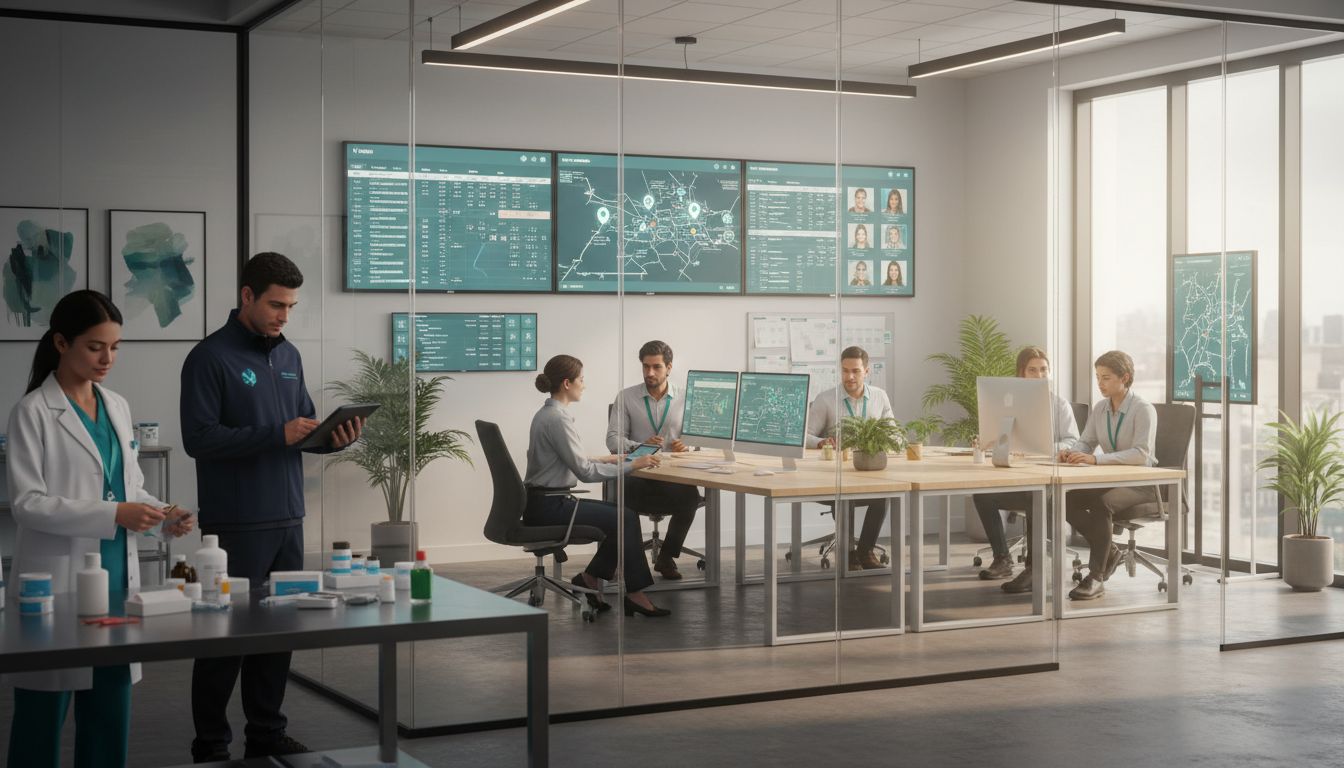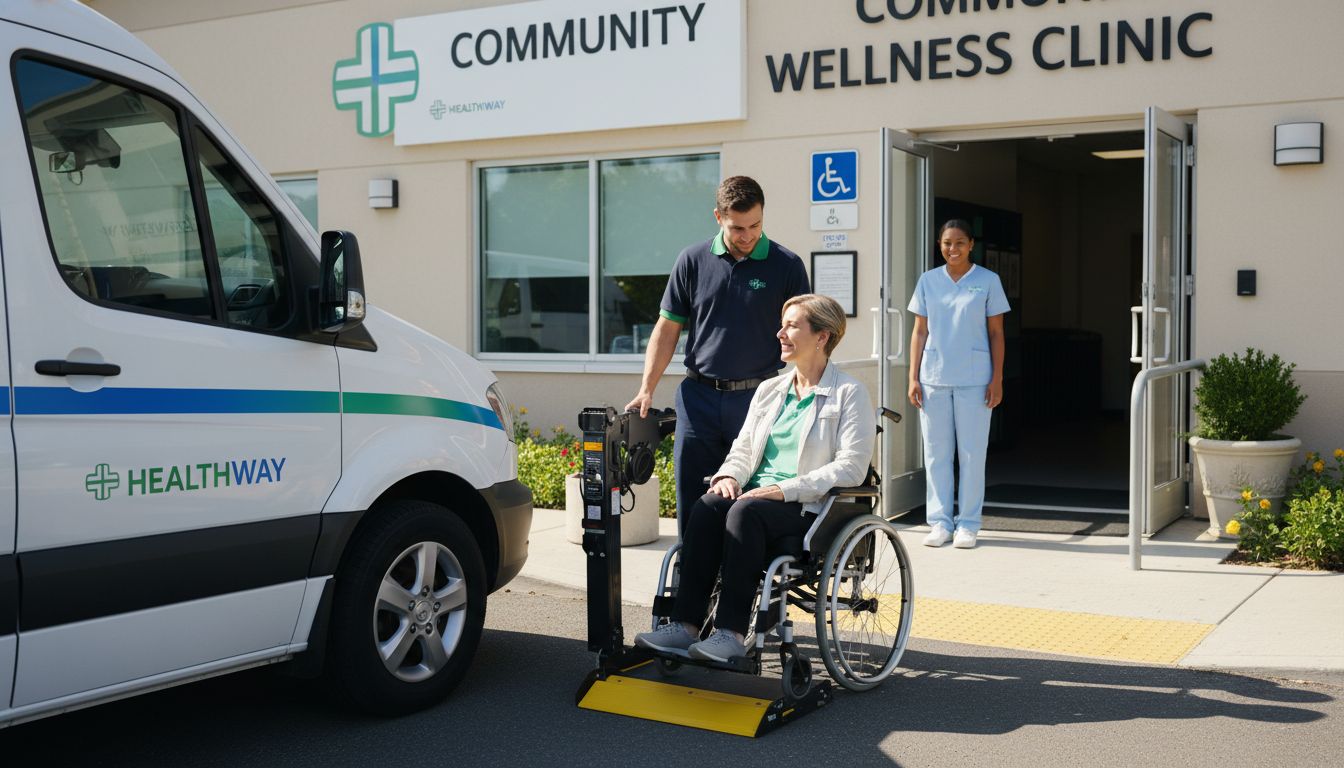Key Trends in Elder Care for Healthcare Providers 2025
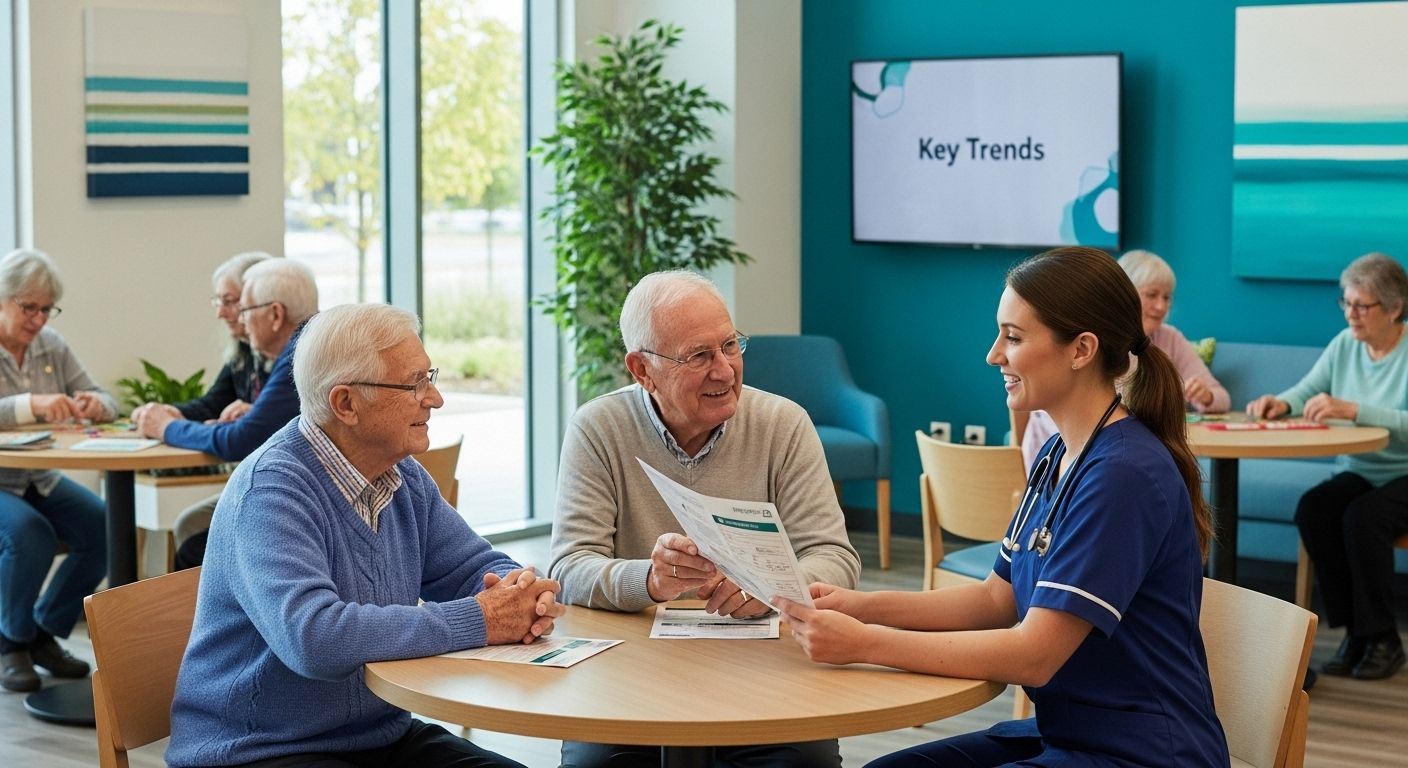
Elder care in America is shifting faster than ever as millions of baby boomers enter retirement age and the medical landscape grows more complex. Most people know the elderly population is increasing, but by 2030, adults 65 and up will make up 21% of the US population. Forget the old image of basic nursing homes. The biggest change is how technology and collaborative care models are blending to deliver not just longer lives, but better, more independent ones for seniors—and for the families and healthcare providers supporting them.
Table of Contents
- Shifting Needs And Demographics In Elder Care
- Technology Transforming Senior Services
- Innovative Approaches To Home-Based Care
- Collaborative Models For Emergency And Transport Services
Quick Summary
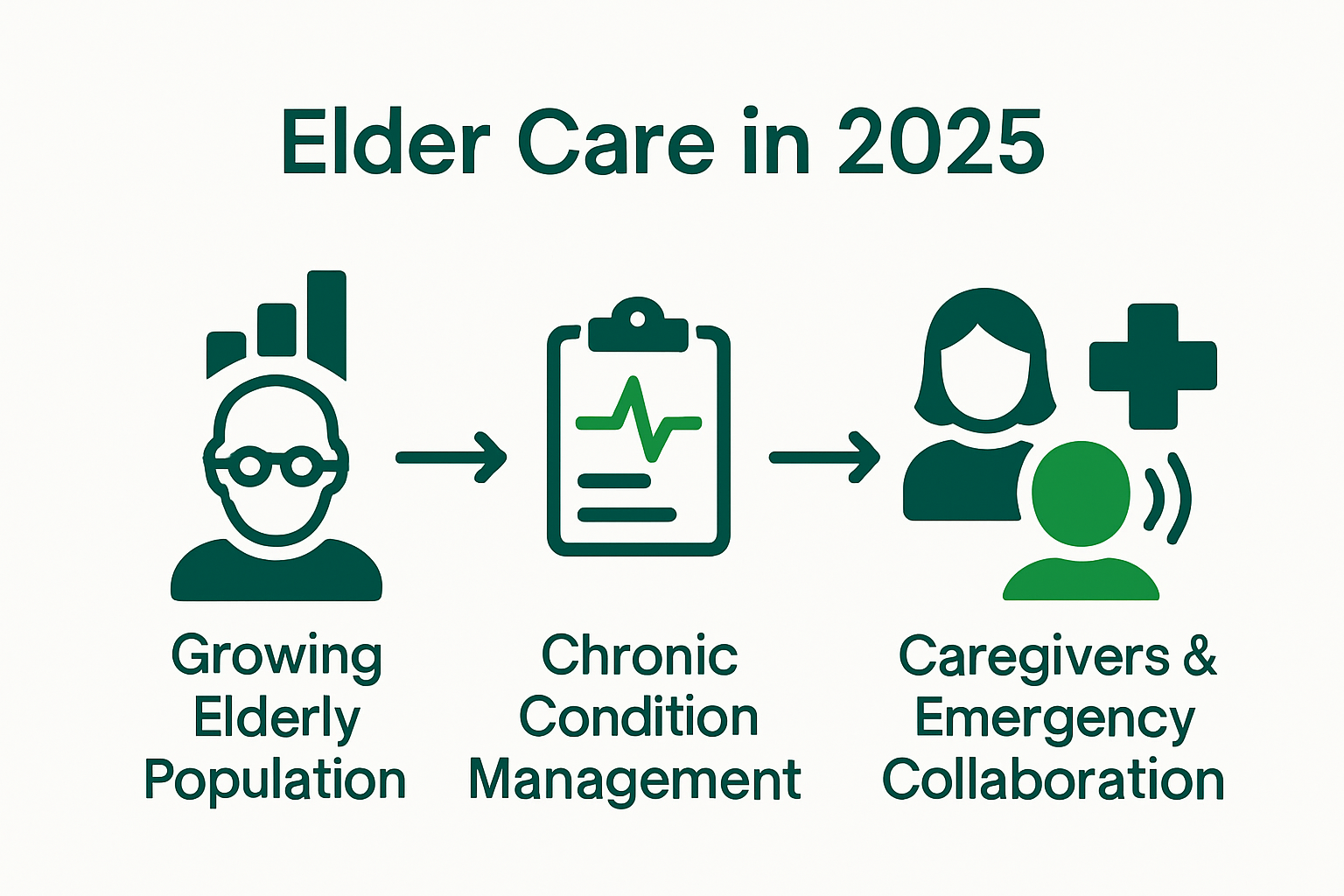
| Takeaway | Explanation |
|---|---|
| Elderly population is rapidly growing. | By 2030, those aged 65+ will be 21% of the U.S. population. This demographic shift increases the demand for elder care services. |
| Chronic condition management is crucial. | Effective strategies involve personalized care plans, regular screenings, and comprehensive support systems for better health outcomes. |
| Technology enhances elder care significantly. | Innovations like telehealth and AI allow for improved monitoring, communication, and personalized treatment, enhancing care delivery. |
| Integrate family and professional caregiving. | Support systems should include resources and programs for family caregivers who play a vital role in elder care. |
| Emergency services need collaborative models. | Integrated emergency response and geriatrics-focused services improve care coordination and outcomes during critical medical situations. |
Shifting Needs and Demographics in Elder Care
The landscape of elder care is undergoing a profound transformation, driven by significant demographic shifts and evolving healthcare requirements. As the population ages, healthcare providers must adapt to meet increasingly complex and nuanced needs of older adults.
The Demographic Revolution
The United States is experiencing an unprecedented demographic transition. Research from the Population Reference Bureau reveals that the population aged 65 and older is growing at an extraordinary rate. By 2030, this age group will represent a staggering 21% of the total population, with projections indicating further growth to 23% by 2050. This demographic shift presents both challenges and opportunities for healthcare systems.
Key demographic trends include:
- Increasing Longevity: Americans are living longer, with life expectancy extending beyond previous generations.
- Baby Boomer Impact: The massive baby boomer generation is reaching retirement age, creating unprecedented demand for elder care services.
- Diverse Care Needs: Older adults now require more complex, personalized healthcare interventions.
Below is a summary table highlighting the key demographic changes and their implications as described in this section.
| Demographic Trend | Description | Implications for Elder Care |
|---|---|---|
| Increasing Longevity | Americans are living longer, with life expectancy increasing | Need for long-term, ongoing health and support |
| Baby Boomer Impact | Large cohort reaching retirement age | Significant surge in demand for elder care services |
| Diverse Care Needs | More complex and personalized healthcare interventions needed | Customized, multidisciplinary care approach required |
| Population Aged 65+ (2030) | 21% of total U.S. population | Major reallocation of healthcare resources |
| Projected Population Aged 65+ (2050) | 23% of total U.S. population | Even greater future demand and planning necessity |
Chronic Condition Management
Managing chronic conditions has become a critical focus in elder care. Research indicates that proactive management of conditions like diabetes, cardiovascular disease, and cognitive disorders is essential for maintaining quality of life. Healthcare providers must develop comprehensive strategies that go beyond traditional medical treatment.
Effective chronic condition management requires:
- Early and regular screening for age-related health risks
- Personalized care plans that address individual patient needs
- Integration of preventive healthcare approaches
- Comprehensive support systems involving family and professional caregivers
The Caregiver Ecosystem
The AARP and National Alliance for Caregiving report highlights a remarkable transformation in caregiving. Approximately 63 million Americans now provide care for family members with chronic or disabling conditions, representing a nearly 50% increase since 2015. This surge underscores the critical role of both professional and family caregivers in supporting elderly populations.
Healthcare providers must recognize and support this expanding caregiver ecosystem by:
- Developing robust support programs for family caregivers
- Providing comprehensive training and resources
- Creating integrated care networks that include both professional and family support
As elder care continues to evolve, healthcare providers must remain adaptable, empathetic, and innovative in addressing the complex and dynamic needs of an aging population. The future of elder care lies not just in medical treatment, but in holistic, person-centered approaches that honor the dignity and individual requirements of older adults.
Technology Transforming Senior Services
Technology is rapidly reshaping senior services, offering unprecedented opportunities to enhance care quality, improve patient outcomes, and streamline healthcare delivery. As digital innovations continue to advance, healthcare providers are discovering powerful tools to address the complex needs of aging populations.
Telehealth and Remote Monitoring
The COVID-19 pandemic accelerated telehealth adoption, and its impact on senior services has been transformative. Research published in JAMA highlights the critical role of virtual healthcare technologies in providing continuous, accessible care for older adults. Telehealth platforms now enable comprehensive remote monitoring, allowing healthcare providers to track vital signs, manage chronic conditions, and conduct regular health assessments without requiring patients to leave their homes.
Key technological innovations in remote care include:
- Wearable Health Monitoring Devices: Smart sensors that track heart rate, movement, and potential fall risks
- Virtual Consultation Platforms: Secure video conferencing tools for medical consultations
- AI-Powered Health Tracking: Intelligent systems that analyze patient data and provide early intervention recommendations
Artificial Intelligence in Elder Care
Artificial intelligence is revolutionizing elder care by providing sophisticated tools for personalized healthcare management. Research from the National Institutes of Health demonstrates AI’s potential to predict health risks, optimize treatment plans, and enhance overall patient care. Machine learning algorithms can now analyze complex medical data, identifying patterns and potential health issues before they become critical.
AI applications in senior services include:
- Predictive health risk assessments
- Personalized medication management
- Cognitive decline detection
- Customized care planning
Digital Support and Connectivity
Beyond medical technologies, digital platforms are transforming social connectivity and support for seniors. Emerging research shows that technology can combat isolation, provide mental health support, and create robust support networks for older adults. Digital platforms now offer comprehensive solutions that integrate social interaction, cognitive stimulation, and healthcare management.
Innovative digital support technologies include:
- Virtual community engagement platforms
- Cognitive training applications
- Digital companion services
- Family communication and care coordination tools
Healthcare providers can learn more about innovative care technologies that are reshaping senior services. As technology continues to evolve, the future of elder care promises more personalized, accessible, and comprehensive support systems that prioritize both medical needs and overall quality of life.
The integration of these technological innovations represents a significant leap forward in senior services. By embracing digital transformation, healthcare providers can create more responsive, efficient, and compassionate care environments that truly meet the diverse needs of aging populations.
Here is a comparison table summarizing the different technological innovations and their primary roles in transforming senior services as discussed above.
| Technology/Innovation | Main Application | Example Features |
|---|---|---|
| Wearable Monitoring Devices | Health monitoring and safety | Track heart rate, detect falls, monitor movement |
| Virtual Consultation Platforms | Remote medical consultations | Secure video calls, digital appointment management |
| AI Health Tracking | Early identification of health risks | Data analysis, predictive analytics, alerts to caregivers |
| Digital Support/Engagement | Social connectivity and mental stimulation | Social apps, cognitive games, virtual communities |
| AI Medication Management | Personalized medication reminders and planning | Automated reminders, dosage tracking, refill notifications |
Innovative Approaches to Home-Based Care
Home-based care is undergoing a transformative revolution, driven by technological advancements, changing patient preferences, and the growing desire of older adults to maintain independence. As healthcare providers adapt to these emerging trends, innovative approaches are reshaping how senior care is delivered.
Technology-Enabled Independent Living
Research from Kiplinger’s Retirement Report reveals a significant shift in how seniors approach home care. Technology now plays a crucial role in supporting aging in place, with sophisticated tools enabling safer, more connected living environments. Smart home devices, remote health monitoring systems, and digital communication platforms are empowering older adults to maintain their independence while ensuring comprehensive care.
Key technological innovations supporting home-based care include:
- Smart Safety Systems: Fall detection monitors and automated safety devices
- Remote Health Monitoring: Wearable devices tracking vital signs and health indicators
- Digital Communication Platforms: Video calling and virtual social engagement tools
AI and Predictive Care Technologies
Insider Intelligence projects that over 70 million Americans will use remote patient monitoring technologies by 2025. Artificial intelligence is becoming a game-changer in home-based care, offering unprecedented insights into patient health and potential risks. AI-powered systems can now predict health issues, provide personalized care recommendations, and help bridge critical gaps in healthcare delivery.
Artificial intelligence applications in home-based care are revolutionizing senior support through:
- Predictive health risk assessments
- Automated medication management
- Early detection of potential health complications
- Personalized care planning
Addressing Social and Emotional Needs
National health polls highlight a critical challenge in senior care: loneliness. Approximately 37% of older adults experience significant social isolation, which can have profound health consequences. Innovative approaches now integrate AI-powered companionship technologies that address both practical care needs and emotional well-being.
Emerging solutions for social and emotional support include:
- AI-powered digital companions
- Voice-activated interactive systems
- Virtual cognitive engagement platforms
- Automated social connection tools
Learn more about innovative home care strategies that are transforming senior support. As technology continues to evolve, home-based care is moving beyond traditional medical interventions, creating holistic support systems that prioritize independence, safety, and quality of life.
The future of home-based care lies in comprehensive, technology-driven approaches that respect the dignity of older adults while providing robust, personalized support. By embracing these innovative solutions, healthcare providers can create more responsive, efficient, and compassionate care environments that truly meet the diverse needs of seniors choosing to age in place.
Collaborative Models for Emergency and Transport Services
Emergency and transport services for older adults are undergoing a significant transformation, driven by the need for more integrated, patient-centered care approaches. As healthcare systems recognize the unique challenges faced by elderly patients during medical emergencies, collaborative models are emerging as critical solutions to improve patient outcomes and optimize resource utilization.
Integrated Emergency Response Systems
Research from the Agency for Healthcare Research and Quality highlights the growing importance of collaborative emergency response models. These innovative approaches focus on creating seamless communication and coordination between hospitals, emergency medical services (EMS), long-term care facilities, and community healthcare providers. By breaking down traditional silos, these integrated systems ensure more efficient and comprehensive care for older adults during critical medical situations.
Key components of integrated emergency response systems include:
- Rapid Information Exchange: Real-time patient data sharing across healthcare platforms
- Specialized Geriatric Emergency Protocols: Tailored response mechanisms for elderly patients
- Comprehensive Patient History Tracking: Ensuring continuity of care during emergencies
Geriatric-Focused Emergency Departments
The Journal of the American Geriatrics Society reports significant advancements in emergency care models specifically designed for older adults. Geriatric-focused emergency departments are pioneering approaches that go beyond traditional emergency services, offering specialized assessment, treatment, and transport strategies that address the complex medical needs of elderly patients.
Innovative features of these specialized emergency departments include:
- Multidisciplinary care teams with geriatric expertise
- Advanced screening processes for age-related medical complexities
- Personalized care transition planning
- Enhanced coordination with community support services
Technology-Enabled Transport Coordination
Emerging technologies are revolutionizing patient transport services, creating more efficient and patient-centered approaches. Advanced dispatch systems, real-time tracking, and comprehensive communication platforms are enabling healthcare providers to optimize emergency and non-emergency medical transportation for older adults.
Technological innovations in transport services include:
- AI-powered routing and dispatch optimization
- Remote patient monitoring during transport
- Integrated communication platforms for caregivers and medical teams
- Adaptive transport solutions for patients with mobility challenges
Learn more about reimagining emergency medical services and the innovative approaches transforming patient care. These collaborative models represent a critical evolution in healthcare, addressing the complex and unique needs of an aging population.
As healthcare providers continue to develop more sophisticated, patient-centered emergency and transport services, the focus remains on creating holistic, compassionate care experiences that prioritize the safety, dignity, and specific requirements of older adults. The future of emergency medical services lies in collaboration, technological innovation, and a deep understanding of the nuanced healthcare needs of elderly populations.
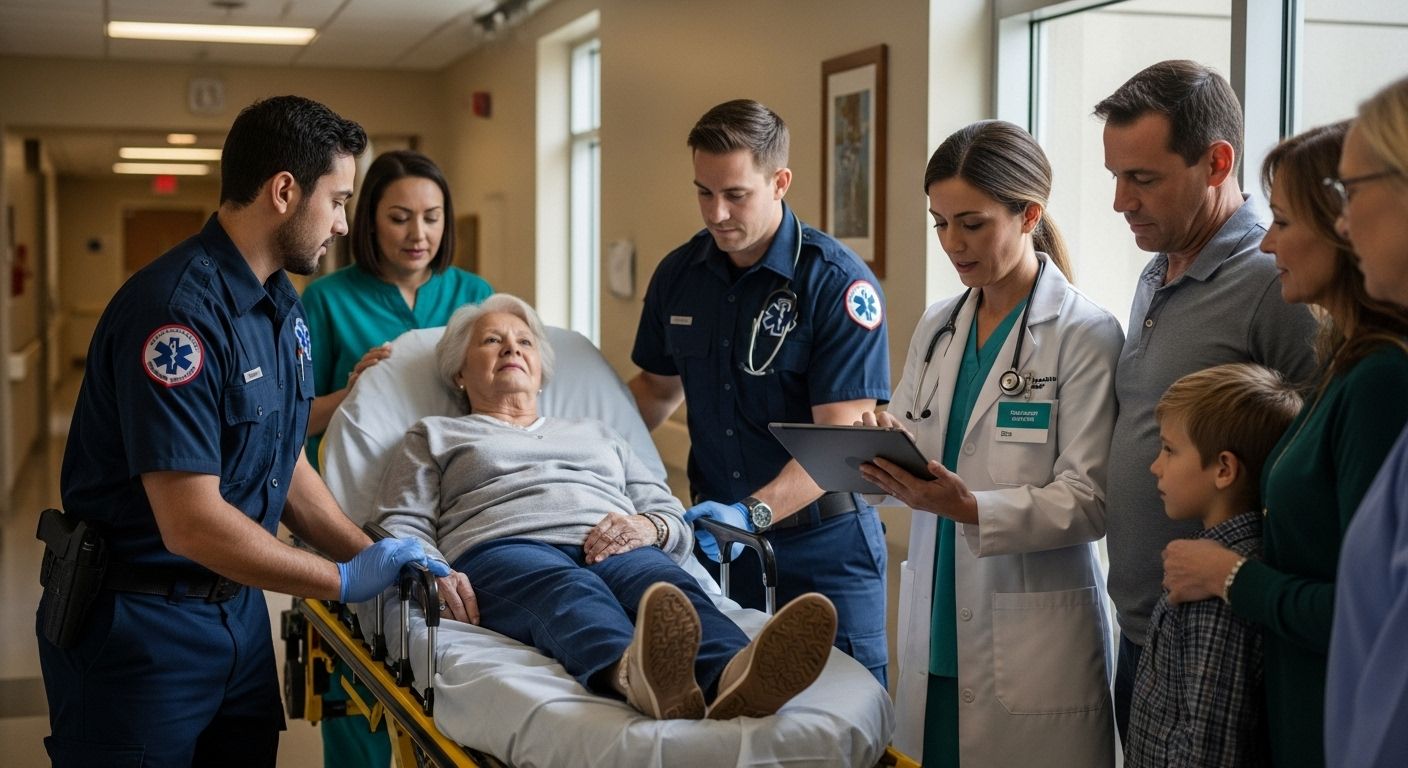
Frequently Asked Questions
What are the key demographic trends impacting elder care?
The elderly population is rapidly growing, with projections indicating that adults aged 65 and older will make up 21% of the U.S. population by 2030. This shift demands more complex, personalized healthcare interventions for seniors.
How is technology transforming senior services?
Technology, including telehealth, AI, and digital support systems, is significantly enhancing elder care by improving monitoring, communication, and personalized treatment options, thus increasing accessibility and quality of care.
What innovative approaches are being adopted in home-based care for seniors?
Home-based care is leveraging smart technology and AI to support independent living, predict health risks, and address social and emotional needs, allowing seniors to age in place safely and with dignity.
How are emergency and transport services evolving for older adults?
Emergency and transport services are increasingly adopting collaborative models that integrate communication among hospitals, EMS, and community healthcare providers, ensuring tailored and efficient responses to the unique needs of elderly patients.
Transform Elder Care Delivery With Streamlined Patient Logistics
Modern elder care demands more than traditional approaches. As detailed in our article on key trends, healthcare providers are facing rising challenges: a rapidly aging population, the need for better chronic condition management, and the complexities of coordinating emergency and home-based care. Manual processes, fragmented communication, and outdated scheduling systems often keep care teams from delivering the responsive, connected experiences older adults deserve.
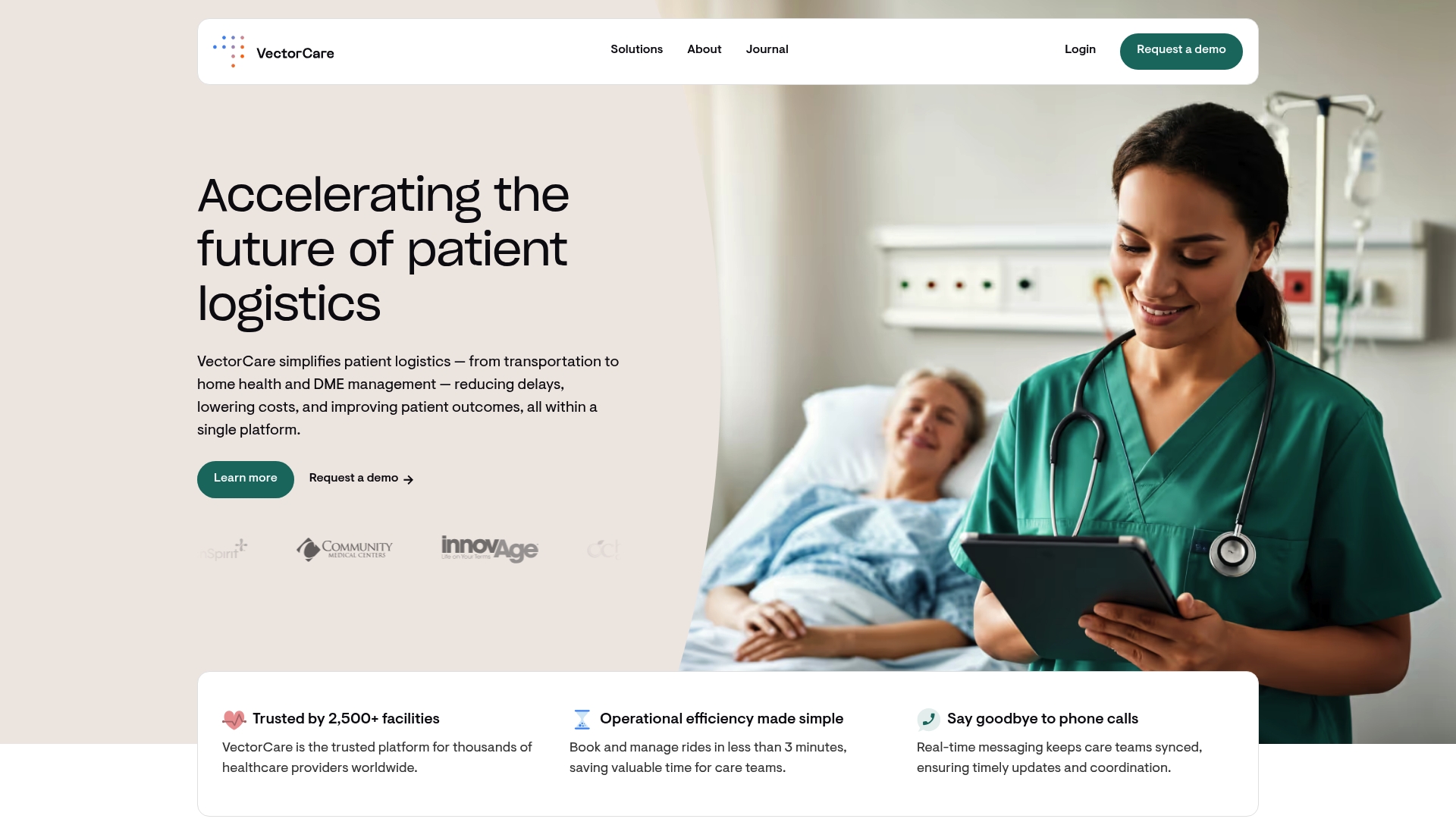
What if your organization could automate patient transportation, optimize referrals, and connect every stakeholder in real time? With VectorCare’s digital platform, you gain access to AI-powered dispatching, automated scheduling, and secure care communication—all in one place. This is your opportunity to reduce administrative burdens, cut costs, and improve patient outcomes. Discover how to bring the future of elder care to your team and see how real-time tools can address today’s most urgent challenges. Ready to reimagine elder care? Visit VectorCare now and schedule your demo to experience a smarter, more efficient system for seamless patient logistics.
